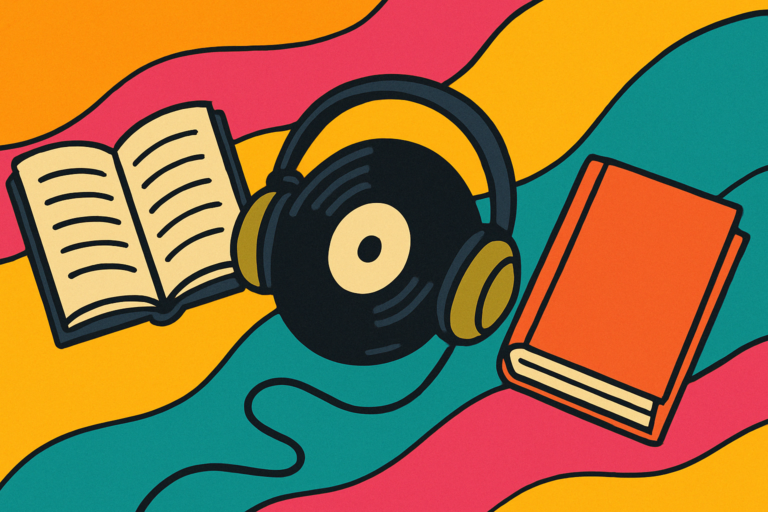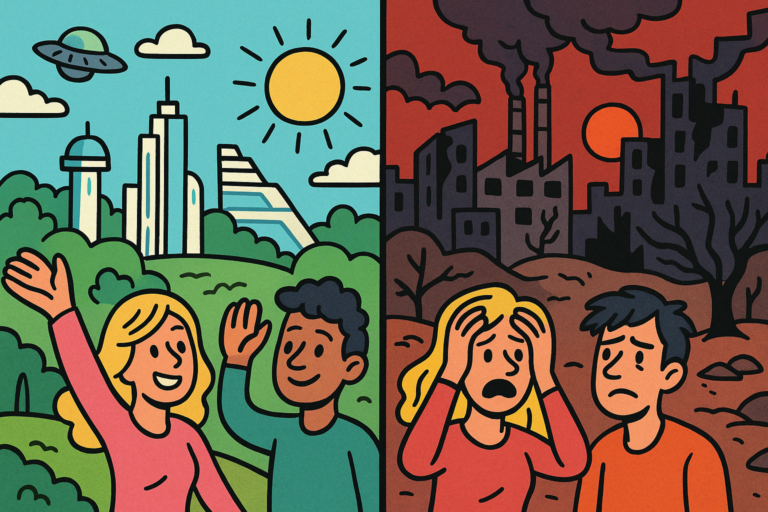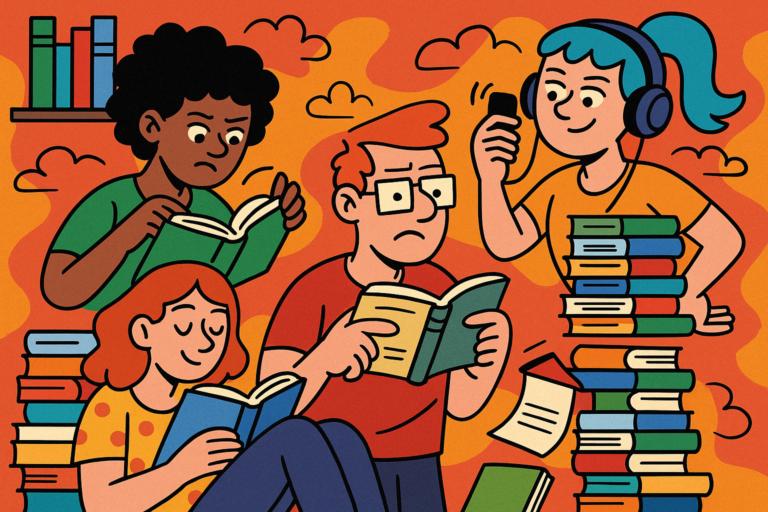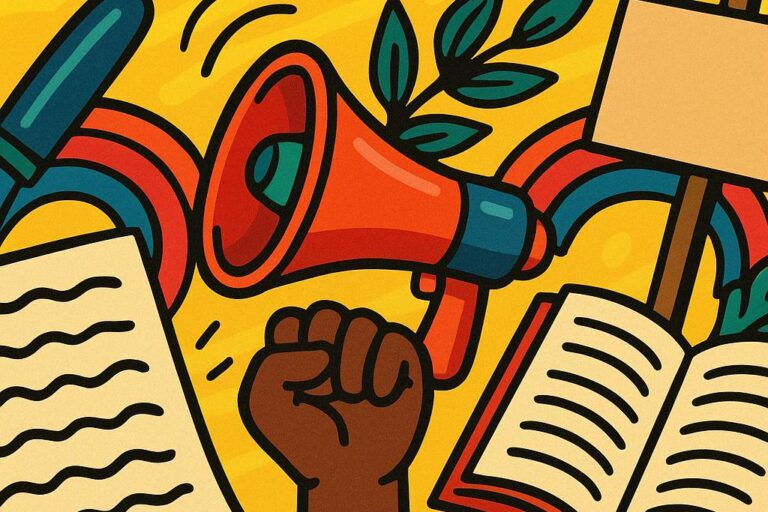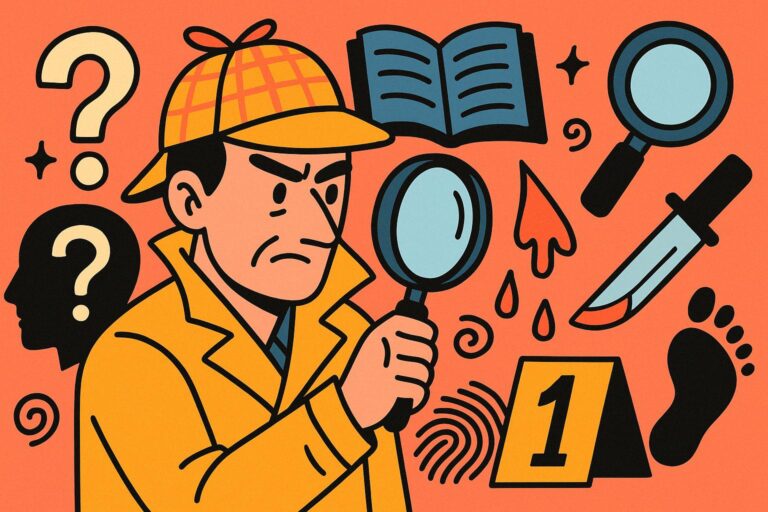Examples of When Stories Became Movements
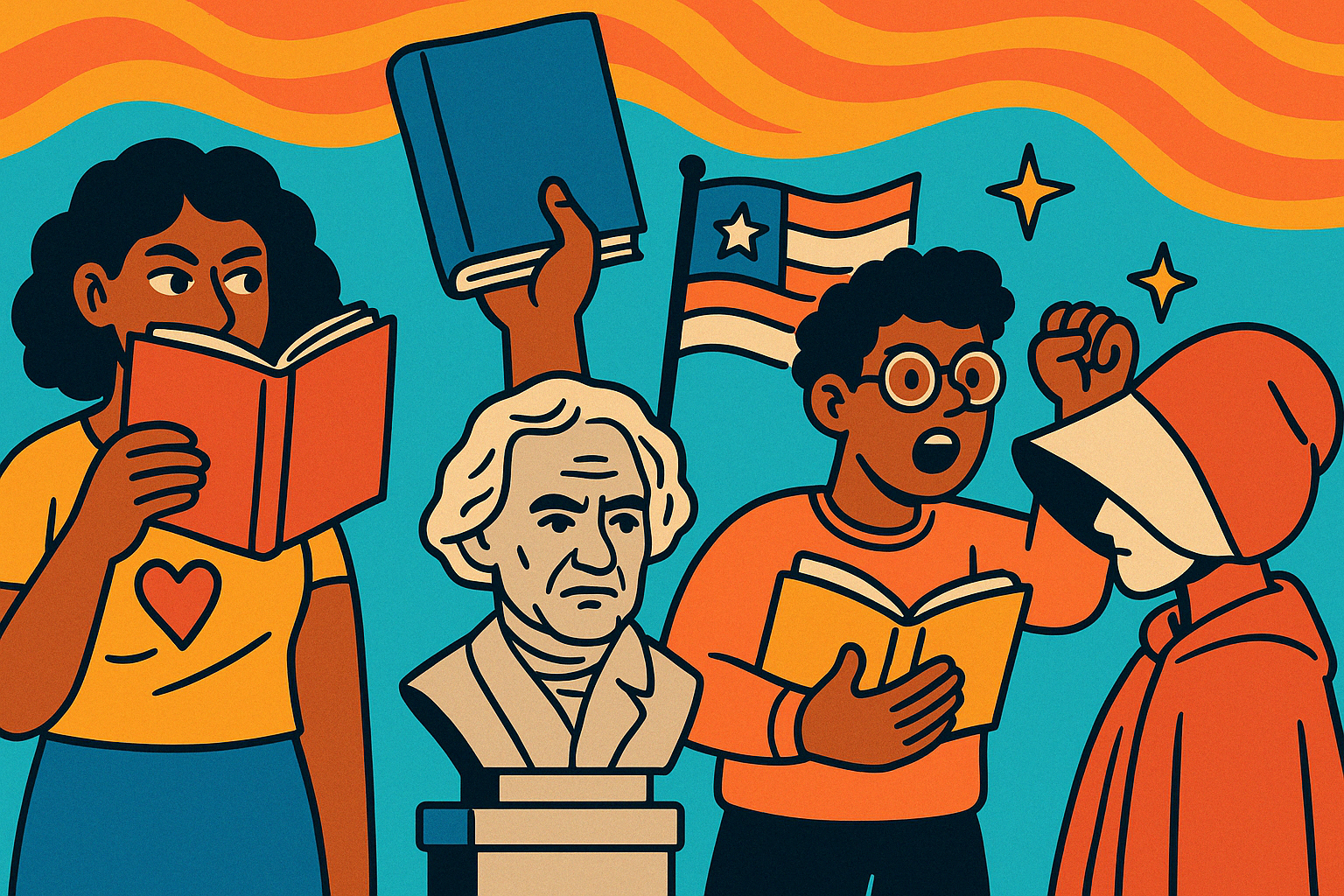
You know that moment when a book doesn’t just stay in your head—but you feel it ripple into the real world?
And while we all know literature can be powerful, I wanted to look at specific times when a novel didn’t just reflect the world—it shook it up.
What I found is that storytelling often succeeds where data and policy papers fall flat. The right book at the right time can ignite a movement, humanize statistics, or push a reluctant public to care about something they’d rather ignore.
In this post, I’m walking through a few novels that genuinely changed things, not just in the literary world, but in courtrooms, classrooms, and streets.
Let’s dive into a few examples that prove fiction can absolutely be activism.
Why Do Some Novels Make It While Others Don’t?
So by now, it’s pretty clear that novels can make waves—but the question that kept gnawing at me while digging into all this was: how does that actually happen?
I mean, what transforms a piece of fiction into a tool of activism or historical influence? Why do some novels break through the noise and shake institutions, while others (even powerful ones) just… quietly disappear?
From everything I’ve read and the examples we’ve walked through, the answer isn’t magic or luck—it’s a set of conditions that help certain stories go beyond the bookstore and into policy, protest, or public discourse.
One of the biggest factors, honestly, is timing. If a novel lands at the exact right cultural or political moment—when people are angry, uncertain, or already mobilizing—it can act like a match dropped onto dry kindling. That’s what happened with Uncle Tom’s Cabin.
It wasn’t the first anti-slavery text, not even close. But it showed up right when the tension between North and South was boiling over, and it did what no speech or sermon could: it told a story that hit people emotionally. It gave form to outrage.
But timing alone isn’t enough. Another major amplifier is education. When a novel gets adopted into school curricula, it basically becomes part of the cultural foundation.
It’s how generations of students learn to talk about race, gender, oppression, or justice—sometimes before they even realize that’s what they’re learning. Books like To Kill a Mockingbird or The Color Purple became powerful in part because they were being taught in classrooms.
That’s a long-term influence strategy. You shape young minds, and in time, those minds shape policy.
Something else that came up over and over again in my research is translation and global reach. Take Achebe’s Things Fall Apart—it didn’t just change Nigerian literature. It was translated into more than 50 languages and became a staple in post-colonial studies around the world.
That global circulation gave it weight far beyond its original audience. When a novel can cross linguistic and cultural borders, it has a much better shot at becoming a universal rallying point, rather than a niche artifact.
And—maybe surprisingly—censorship often plays a strange but powerful role here. When a book is banned or challenged, especially by governments or school boards, that act becomes a megaphone.
The ban itself becomes part of the story. We saw this with Persepolis and even more recently with books like Gender Queer. The moment someone says “you shouldn’t read this,” people get curious. In a way, censorship confirms the book’s subversive power, and it often draws in readers who might not have picked it up otherwise.
Lastly, there’s something a bit more modern that I think is worth calling out: the visual and symbolic life of a novel. Some stories are adaptable to protest in really tangible ways. The Handmaid’s Tale is the clearest example here—those red robes and white bonnets are now globally recognized symbols of reproductive rights resistance.
When a novel gives people imagery, language, or metaphors they can physically carry into the streets, that’s a kind of viral activism. It’s not just read—it’s worn, chanted, photographed, and hashtagged.
So the influence of a novel doesn’t just depend on how well it’s written or how important its message is. It depends on whether that story can move, spread, survive opposition, and adapt to new contexts. It’s about traction, not just brilliance.
What that tells me is that the line between fiction and activism is way thinner than it looks. A story doesn’t have to explicitly preach or campaign to become powerful. It just has to land in the right hands, at the right moment, and speak in a voice people can’t ignore.
Textual Case Studies of Novels That Provoked Policy Change
Let’s get into the meat of this—how specific novels actually influenced real-world decisions and structures. These aren’t just books that sparked conversation—they moved the needle.
I picked three texts that are often referenced but not always deeply unpacked in terms of mechanism: how they created change, not just that they did.
1. Uncle Tom’s Cabin by Harriet Beecher Stowe (1852)
Yeah, this one feels obvious. But here’s where it gets interesting: it wasn’t just the content of Uncle Tom’s Cabin—it was the distribution model that made it explosive.
Stowe’s novel was published as a serial in The National Era, a popular anti-slavery newspaper, before it became a book. By the time it hit bookstores, it already had a readership. Over 300,000 copies sold in the first year in the U.S. alone, which is mind-blowing for the 1850s. And that’s not counting the pirated copies that circulated in the South.
What made the book powerful wasn’t just the melodrama—it was how it put a face to suffering. By following Tom, Eliza, and others, readers—especially Northern white readers—were forced to imagine the humanity of enslaved people. There was rage, guilt, and for many, a first-time confrontation with a system they benefitted from.
Did it “cause” the Civil War?
No.
But it arguably helped shift public sentiment enough that abolitionist politics gained mainstream ground. The book became the cultural rallying point for anti-slavery rhetoric. And that infamous quote, supposedly from Lincoln—“So you’re the little woman who wrote the book that started this great war”—is apocryphal, yes, but still tells you how embedded this book was in the political psyche.
2. The Jungle by Upton Sinclair (1906)
Now here’s a fascinating case of activism backfiring—in a productive way.
Sinclair set out to expose the brutal exploitation of immigrant laborers in Chicago’s meatpacking industry. His goal? Stir up socialist outrage. What actually happened? Americans were horrified by the unsanitary meat.
“I aimed at the public’s heart,” Sinclair said, “and by accident, I hit it in the stomach.”
The public reaction was instant and visceral. People weren’t crying for the exploited worker—they were demanding clean sausage. That might seem like a failure of the book’s intent, but here’s the kicker: the outcry led directly to federal legislation. President Theodore Roosevelt, who famously called Sinclair a “crackpot,” still invited him to the White House. After a bit of arm-twisting and inspections, the Pure Food and Drug Act and the Meat Inspection Act were passed in 1906—the same year the novel came out.
Sinclair didn’t topple capitalism, but he forced the government to act. That’s still a massive win for literature as leverage.
3. Things Fall Apart by Chinua Achebe (1958)
This one’s a different kind of activism. It didn’t spark new laws, but it fundamentally shifted the narrative—not just in literature, but in global consciousness.
Achebe wrote Things Fall Apart as a direct counter-narrative to the colonial portrayal of Africa. Books like Heart of Darkness had long established a European gaze where African life was either background or burden. Achebe gave us Okonkwo, a fully formed Igbo man with pride, fears, contradictions—a protagonist who didn’t exist just to reflect colonial angst, but who had agency and identity.
What’s radical here is that Achebe wasn’t writing for a Western audience—he was writing for Nigerians, and more broadly, for Africans reclaiming their narrative post-colonization. This changed not only literature but education policy in many African nations, where colonial texts were replaced by indigenous ones.
And the ripple effect? Achebe’s work became a cornerstone of post-colonial literature and scholarship. It gave other writers—Ngũgĩ wa Thiong’o, Chimamanda Ngozi Adichie, even Salman Rushdie—a blueprint for how fiction could challenge imperial frameworks. Not with a gun, but with a story.
These three novels didn’t just spark emotions—they forced institutions to respond. Whether that meant new laws, policy changes, or entire curriculum overhauls, they proved fiction can be a serious tool for shifting power. And honestly, we’re just scratching the surface.
A List of Activist Novels and Their Effects
Here’s where things get a little more rapid-fire. There are a lot of novels that didn’t just stir readers—they became rallying points. They were symbols, tools, even uniforms (literally) for activism. Some sparked protests, others influenced generations of curriculum, and a few are still showing up on placards and hashtags.
This isn’t just a list of “important books”—these are novels that took on a life beyond the page. Let’s break it down:
1. To Kill a Mockingbird by Harper Lee (1960)
We can’t talk about literature as activism without touching this one. Yes, it’s a staple in high school classrooms. But it’s also been at the center of real-world civil rights conversations for decades.
Set in the Jim Crow South, the story centers on a white lawyer, Atticus Finch, defending a Black man wrongly accused of raping a white woman. While some modern critiques rightly point out the “white savior” trope, what’s undeniable is how this book softened white liberal resistance to anti-racist reform at a time when public sentiment was still shifting.
It was widely read in the ’60s and beyond because it made injustice impossible to ignore—even if filtered through a white child’s perspective. In classrooms, it created space for conversations about race, justice, and bias long before those topics were common in public education.
And let’s not forget: the book was banned and challenged repeatedly. That’s often the first sign something’s making people uncomfortable—in a good way.
2. One Day in the Life of Ivan Denisovich by Aleksandr Solzhenitsyn (1962)
This one hits different. Imagine a Soviet regime publishing a novel that directly criticizes its own prison camp system—and then realizing a little too late what it just unleashed.
Solzhenitsyn’s short, brutal novel depicts a single day in a Stalinist gulag. It was one of the first times Soviet citizens (and the West) got a humanized view of the repressive system from someone who had lived it. It blew the lid off the carefully constructed narrative of progress and unity the USSR had been selling.
Although initially approved during Khrushchev’s thaw, the book’s reception spiraled fast. It was banned shortly after, and Solzhenitsyn was eventually exiled. But the damage was done: samizdat (clandestine publishing) took over, and the story spread underground. For many Soviet citizens, this was their first time seeing the truth in print. It catalyzed internal resistance, seeded dissident movements, and inspired later exposés like The Gulag Archipelago.
This novel wasn’t just read—it was whispered, smuggled, and remembered.
3. The Color Purple by Alice Walker (1982)
Here’s a novel that revolutionized conversations about intersectionality before the term even existed.
Walker’s The Color Purple doesn’t just focus on race—it deals with gender, sexuality, trauma, spirituality, and community. The protagonist, Celie, starts out silenced and broken but reclaims her voice, relationships, and dignity. That journey mirrored what many Black women felt was missing from the feminist and civil rights narratives at the time.
It gave voice to women who often felt erased from both movements. And while it was attacked (and still is) for its raw depictions of abuse, it also inspired a generation of Black feminists, artists, and activists. The novel’s cultural footprint is massive: Pulitzer Prize, a Spielberg film, a Broadway show, a musical remake—and countless reading groups and college syllabi that centered it as essential feminist literature.
It also proved that Black women’s stories could be central, political, and wildly successful. That’s activism by example.
4. Persepolis by Marjane Satrapi (2000)
This graphic novel changed the game. Seriously.
Persepolis tells the story of Marjane’s childhood in Iran during the Islamic Revolution and her eventual exile. What made this book different wasn’t just the story—it was the format. Satrapi used the graphic novel medium to make complex geopolitics intimate, funny, devastating, and accessible to people who’d never read a thing about Iran.
The book became a staple in high schools and universities, especially post-9/11, when Middle Eastern identity was under siege. And it was immediately politicized: banned in Iran, challenged in U.S. schools, but embraced by educators and activists alike.
It helped reframe Iran’s image—not as a monolith of “terrorists,” but as a country full of human beings, children, thinkers, and rebels. It gave people a new visual language to talk about exile, resistance, and identity.
5. The Handmaid’s Tale by Margaret Atwood (1985)
Honestly, this one didn’t fully become an activist icon until decades after it was published. But wow, did it catch fire.
Atwood’s dystopia of a patriarchal theocracy didn’t just feel scary—it started to feel prophetic. And when real-world policies began to echo parts of Gilead (especially around reproductive rights), people turned to the book again. And again. And again.
It became a symbol of resistance—especially in the U.S., where protesters began wearing the red cloak and white bonnet as a way to visually protest abortion bans and patriarchal legislation. Entire rallies and campaigns adopted the imagery. The Hulu adaptation gave it a second wind, and suddenly, the novel was in everyone’s hands again.
Atwood has said she didn’t invent anything in the book—every piece of it has a real-world precedent. That’s what makes it terrifying. And that’s also what makes it activism in disguise—fiction that wakes you up because it’s already real.
6. Les Misérables by Victor Hugo (1862)
And now for an old-school pick. This doorstop of a novel was so much more than a tragic love story or musical fodder.
Hugo’s Les Misérables was a social and political manifesto wrapped in melodrama. It dives into poverty, justice, mercy, and rebellion—often pausing for long, essay-like rants about sewer systems and revolution.
But its impact? Massive. The book was banned in several countries. It was widely read by revolutionaries. It gave a moral language to resistance—and to this day, “Do you hear the people sing?” is belted out at protests worldwide, from Hong Kong to Paris.
It’s not subtle—but it never tried to be. It wanted you to feel something and go do something.
Final Thoughts
Look, I’m not claiming novels always change the world. But when they do—it’s powerful. It’s real. And it’s often unexpected.
What struck me most while writing this is how fluid the boundary between fiction and activism really is. A novel might not carry a slogan, but it can humanize injustice, give voice to the silenced, or offer a vision of what resistance looks like.
Stories move people. And people make change.
If you’ve got other titles you think should be here—or you’re working on one yourself that might spark the next movement—I’d love to hear about it.
Because honestly, the story’s not over.
